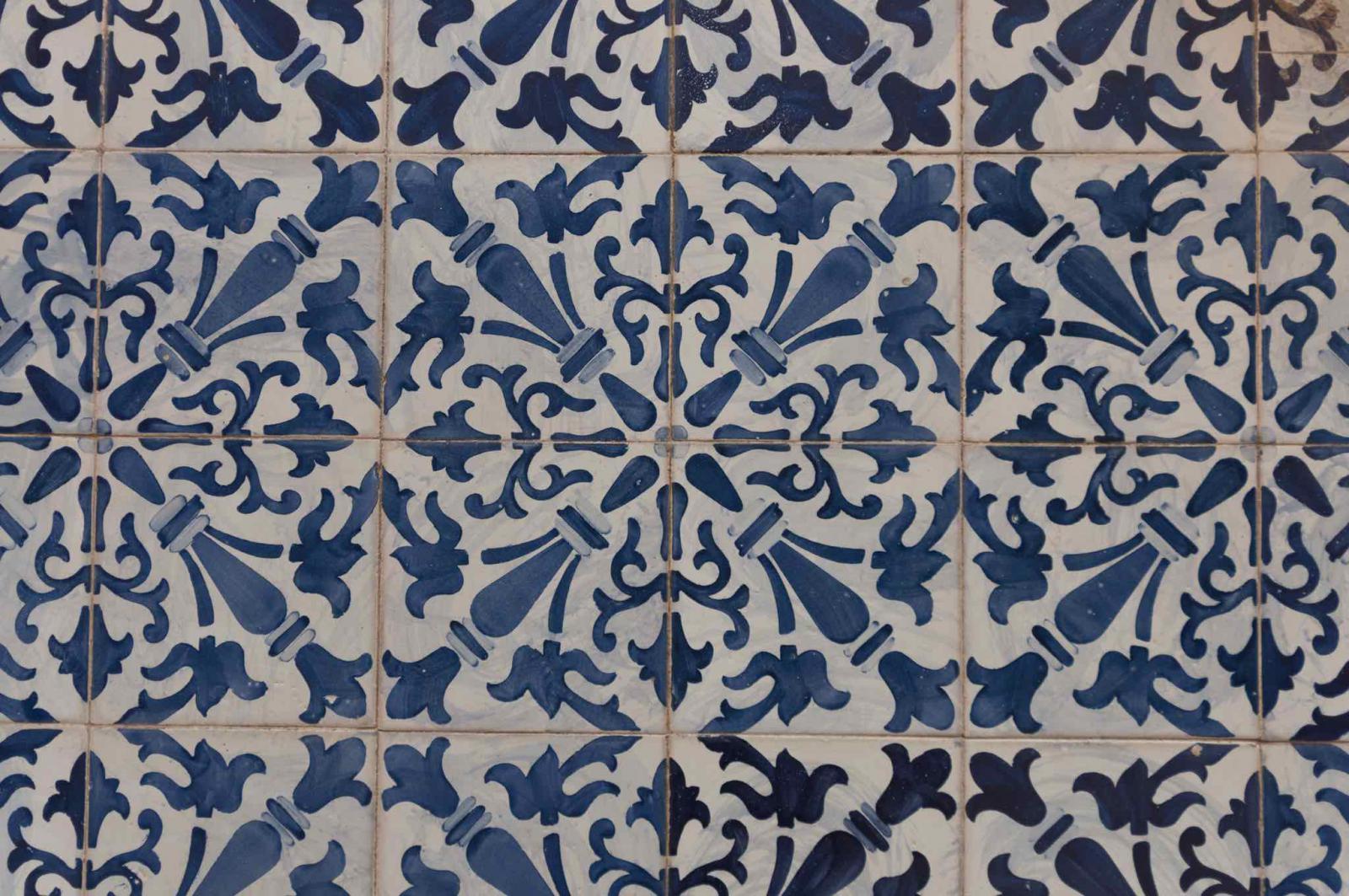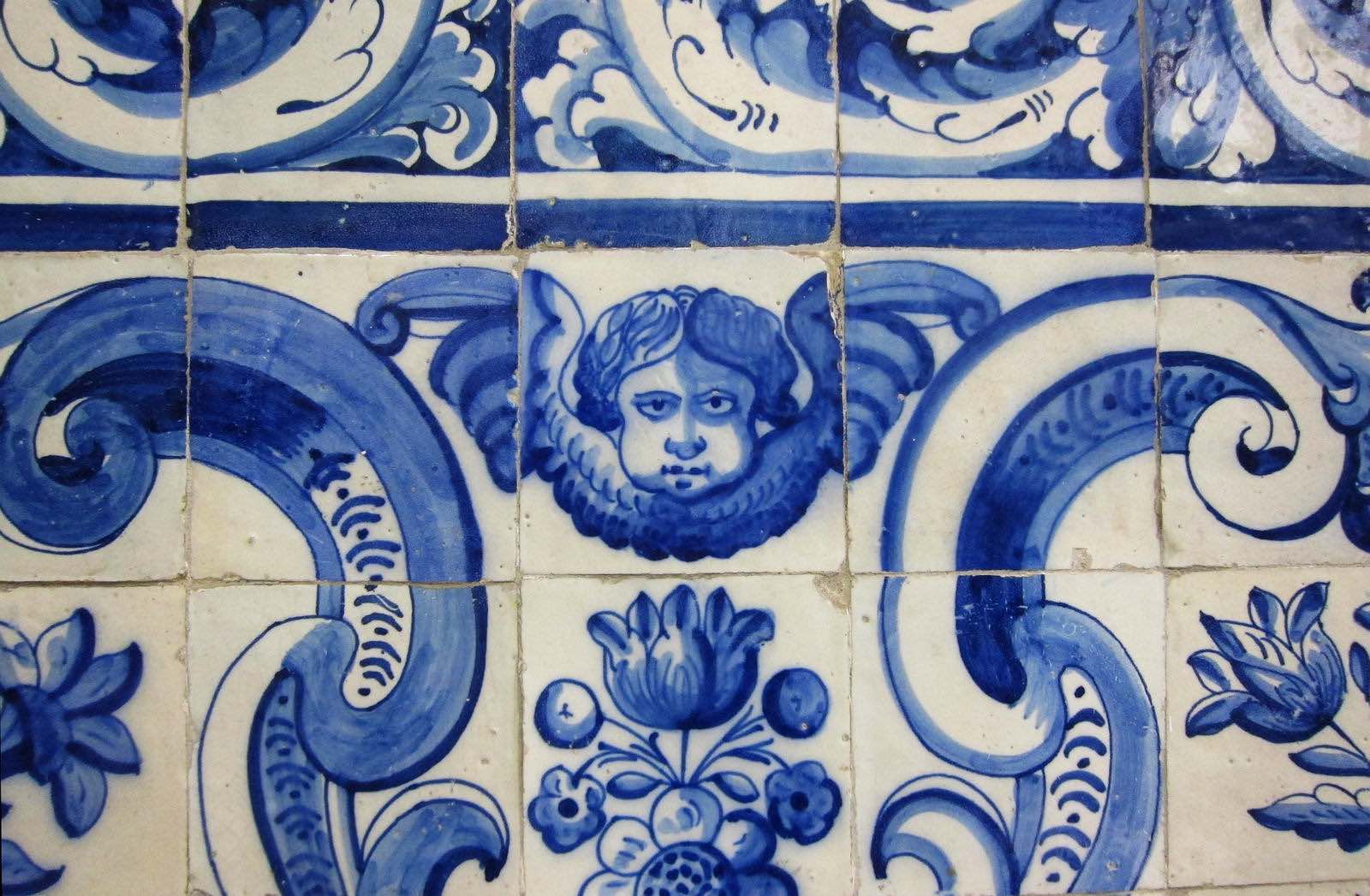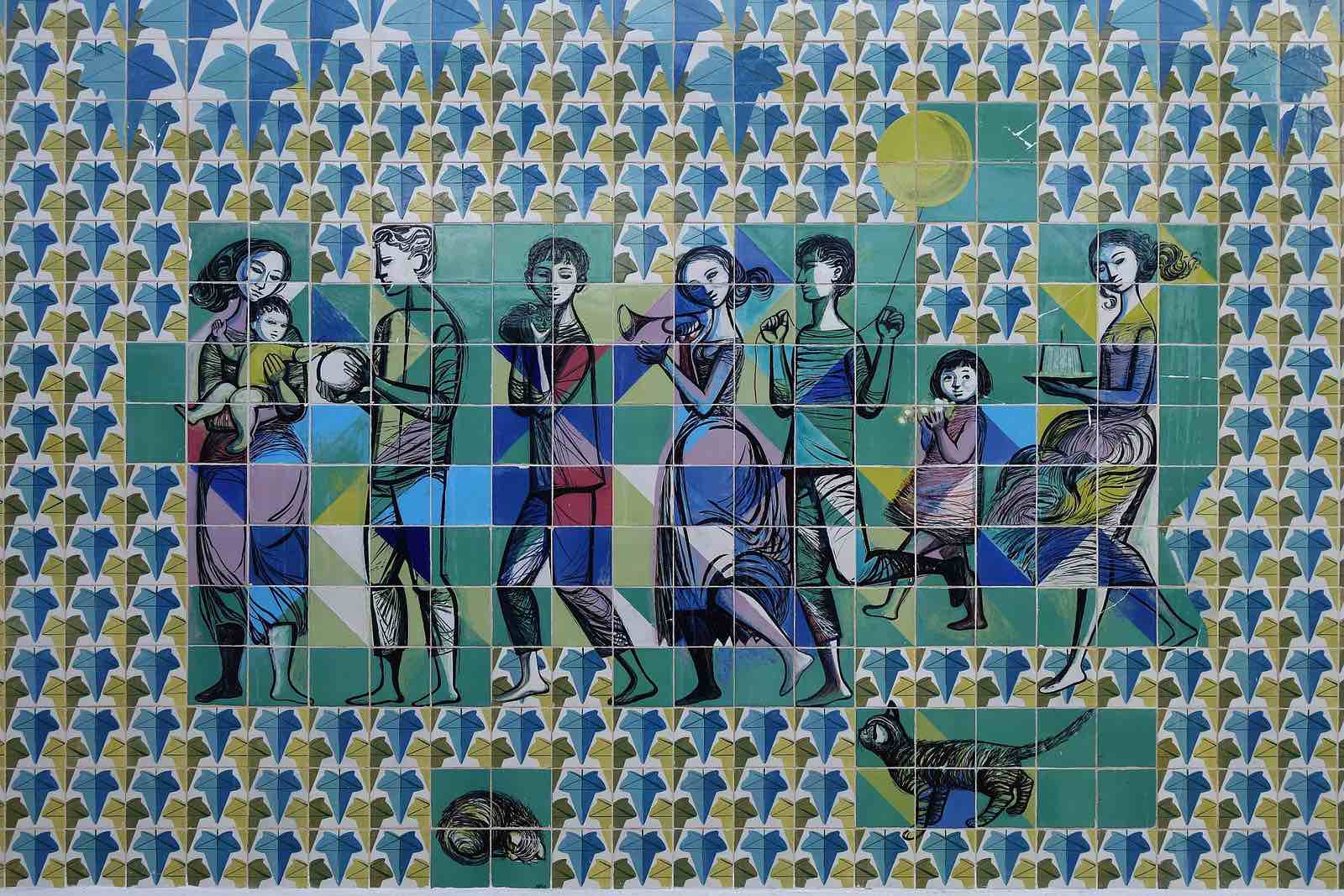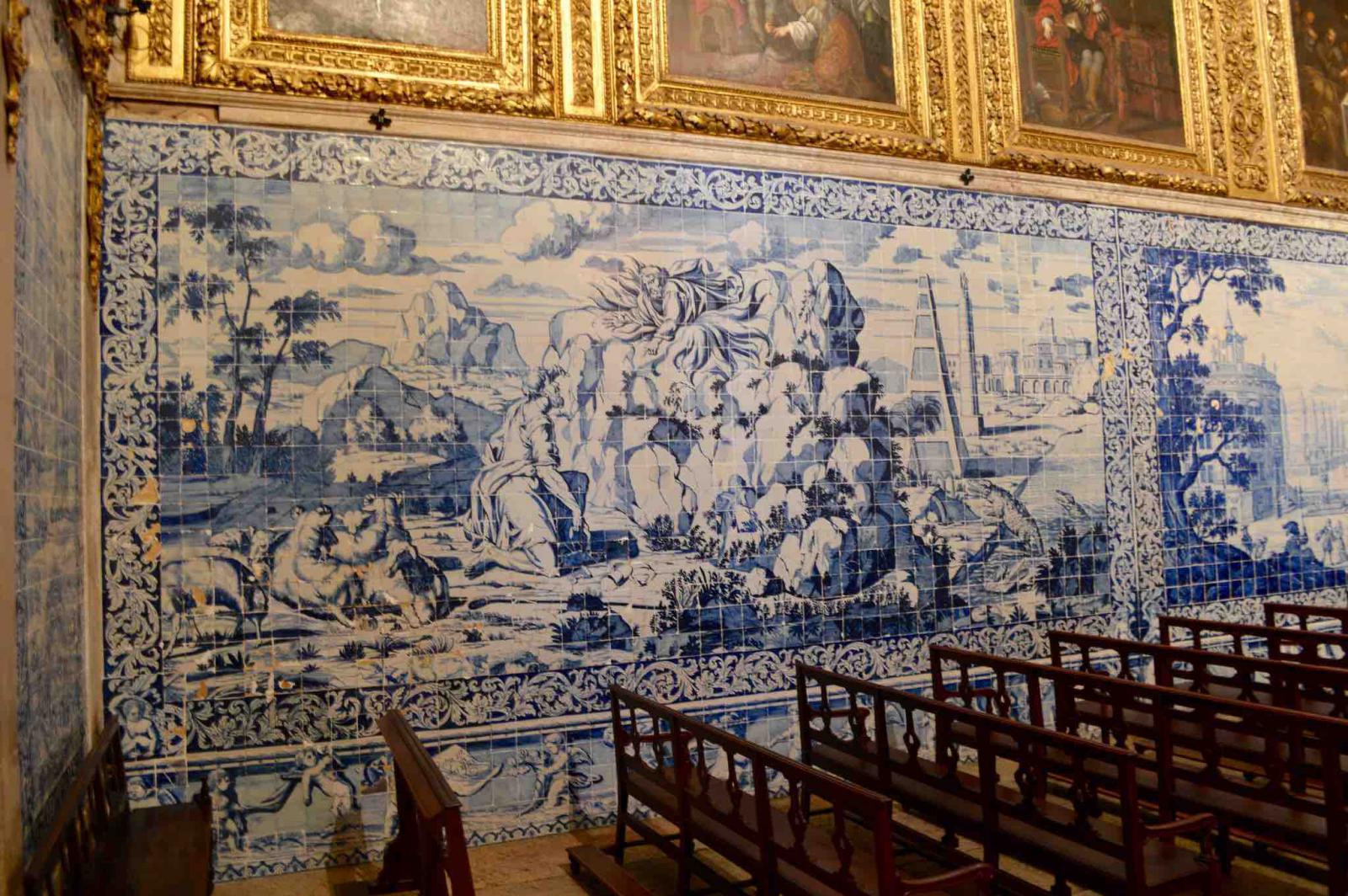Secrets
Secret Lisbon: the infinite richness of azulejos
8 years ago - Julie D.
Recalling lisbon brings immediately to mind the calm and freshness of a courtyard or an interior where the Mediterranean warmth is tempered by the cold material of the tin glazed ceramic tilework and their delightful aquatic tones. This freshness is not only imaginary: the azulejos allow a certain degree of "natural" air conditioning.
The azulejos, a deceptive blue
The azulejos tiles decorate all spaces, from the most opulent to the most modest. Their most famous motifs are the blue and white frescoes, inspired by the Delftware, that depict biblical or historical episodes, scenes from everyday life, rural idylls, in a debauchery of stylized flowers, scrolls and geometric patterns.
And yet "azulejo" does not come from the word "azul", "blue" ... No, the word "azulejo" comes from the Arabic "al zulaiga", "small polished stone". For the Moors settled in Spain, it was a matter of imitating the Roman mosaics. For if the azulejos are primarily associated with Portugal, the use of faience tiles or enamelled terracotta to decorate the interior or facades of houses has spread here and there in the Mediterranean basin: Spain bears the Arabic-Andalusian mosaics or "mudéjares", and we can still find today in Morocco the "zellige", shards of colored ceramic cut to recompose abstract geometric patterns.
But the Portuguese azulejos have taken a path of their own. Explosion of colors and inspiration, the azulejos have known how to absorb the different fashions, the trends, all the innovations, allong the years to express the slightest subtleties of the Portuguese decorative arts. A good example: the figura de convite, particular to Portugal. Disseminated here and there in random streets, these life-size characters look at the passerby in the eyes and invite him to enter.
The azulejos in Lisbon, five centuries of history
The faience tiles arrived in Portugal at the beginning of the 16th century and never left. It is King Manuel I of Portugal, during a visit to Seville, who was seduced by Spanish mosaics and tiles inspired by Arab-Andalusian techniques. In Portugal, the azulejos have reflected all artistic movements, all modes and all technical innovations. Italian majolica, blue Delft tiles: the infatuation of the wealthy Portuguese of the 17th century for the latest fashion of faience was no longer denied.
Azulejo is an extremely flexible mode of expression that welcomes all inspirations. Religious scenes or of everyday life, abstract motifs, flute-playing monkeys and other rococo motifs, debauchery of colors or soothing minimalist bichrome in blue and white ... The azulejo is an artistic genre on its own that reflects the Great movements of the intellectual and material life of Portugal.
Easier to handle and less expensive than carved stone, tiles and faience elements have also made the fine days of Art Nouveau. In Vienna with the Jugendstil, in Budapest, in Barcelona with the stunning blue staircase of the Casa Batlló, architects and artists explore the infinite possibilities of a versatile material, which bends to all fantasies. The Portuguese azulejos, whose popularity has never been denied, also make part of this movement.
Varied, the manufacturing processes range from artisanal techniques of hand-painted tiles to the ingenious innovations that have allowed mass productions: we then move on to a technique of transfer of patterns comparable to the decal.
The humble azulejo owes its perpetuity to its modesty. It continues to inspire artists to present day: the small square is the perfect companion of all experiments and all plastic audacities. For some, like Maria Keil, the azulejo becomes a medium of predilection. Do not miss the "La Mer" on Avenue Infante Santo, her huge fresco of azulejos completed in 1959. She would say laughingly: "I work with a millenary technique, on a small square of 14 cm by 14 cm, and with water based paint ... It is perhaps because it is a medium so modest that it is not appreciated to its right value. "
Where to see azulejos in Lisbon?
Let’s begin by taking the metro...
Far from being confined in a dated postcard, the azulejos continue to be used for the decoration of public spaces. This is of course the case of the Lisbon metro: since its opening in the 1950s, several metro stations have been sumptuously decorated with frescoes of azulejos entrusted to renowned artists.
The original idea of using azulejos as a wall covering would be that of the architect Francisco Keil do Amara and of his wife, Maria Keil, the great lady of Portuguese fine arts. In order to be able to carry out this project in spite of the limited funds, the Keil couple developed an ingenious abstract decoration. It was therefore sufficient to skilfully recombine the tiles to obtain, from a limited range of colors and patterns, an infinitely varied décoration varying from station to station.
During the expansion of the metro in the late 1980s, it was decided to continue in the same vein, assigning the realization of frescoes to several contemporary artists. One can thus discover the works of Rolando de Sá Nogueira in Laranjeiras, Júlio Pomar in Alto dos Moinhos, Manuel Cargaleiro in Colégio Militar / Luz, and Vieira da Silva in Cidade Universitária.
The airport metro station was redecorated in 2014 by the designer António Antunes. His immense frescoes welcome travelers to Lisbon by staging the icons of Portuguese culture: the fado singer Amália Rodrigues, the soccer player Eusébio, the architect Pardal Monteiro, the artist Rafael Bordalo Pinheiro (also a great ceramist), the Artist Almada Negreiros, the poet Fernando Pessoa as well as José Saramago, Nobel Prize winner for Literature.
Azulejos in Lisbon, not to be missed...
The National Museum of Azulejos: Museu Nacional De Azulejo
A refreshing and well-designed visit of approximately 1h30 awaits you at the National Museum of Azulejos, housed in a former convent of Clarisses founded in 1509. Here you will discover the main stages of the development of azulejos, from Arab-Andalusian mosaics to contemporary creations. In the museum the notices are in Portuguese, therefore do not forget to download the free app: once the language chosen (Portuguese, English or sign language), it guides visitors through 33 descriptive sheets from the ground floor all the way to the second floor of the museum. On the second floor, the fresco that represents Lisbon before the earthquake of 1755 is one of the jewels of the museum. In the cloister, small carved figures support the basin of the fountain all while expresing complaint about the weight!
Museu Nacional do Azulejo - Rua da Madre de Deus, 4, 1900-312 Lisboa - from Tuesday to Saturday from 10 am to 6 pm.
The Palace of Sintra
The palace of Sintra is the medieval residence of the kings of Portugal. It was here that Manuel I initialy wanted to introduce the use of the incredible rich azulejos. One of the motives is its coat of arms, the armillary sphere, which is repeated endlessly on the walls. This sphere, representing the celestial one, is until present day, on the Portuguese flag.
See also our article on Sintra.
Palacio de Sintra - Parque de Monserrate, Sintra - open all year long except on December 25th and January 1st from 9:30 am to 7pm.
In confidence... The Atrio Tiles store is the creation of a Portuguese based in the United States. It offers delightful jewelry with romantic shapes and motifs inspired by the azulejos of the Sintra palace and other historical azulejos: earrings, colored rings and cuffs will enchant your eyes. (Etsy Store here)
The Palace of the Marquises of Fronteira: Palacio de Marqueses de Fronteira
Designed as a hunting lodge in 1671, the palace is still the private residence of the Marquis de Fronteira. The Interior aswell as the exterior are both decorated in a revelry of azulejos. Frescoes with rustic or naive accents represent hunting scenes, country festivals and battle scenes. Will you be able to find the small unusual details? The Hall of Battles of the Palace (Sala das Batalhas) was nicknamed "the Sistine Chapel of the Azulejos" and celebrates the victory of the house of Braganza against the Habsburgs of Spain in the War of Portuguese Restoration.
Palacio de Marqueses da Fronteira – Largo São Domingos de Benfica 1, 1500-554 Lisboa –from Monday to Saturday from 10 am to 5 pm - guided tours at 11 am and 12 pm / noon, as well as at 10:30 am and 11:30 am from June to September
Where to buy authentic azulejos in Lisbon?
The shop Manuel Marques Antunes provides antique azulejos and also responds to orders, such as this original decoration idea: to use the tiles of azulejos as place cards for a wedding meal.
Azulejos MMA – Rua do Jardim 75A, Bicesse 2645-343 Alcabideche – Monday to Saturday from 9 am to 1 pm and from 2 pm to 6 pm, closed on Saturdays in August and September.
The Fabrica Sant'Anna produces modern azulejos and reissues of antiques, manufactured in series or decorated with care by hand: a real work of artisans. It is possible to order custom tiles, in order to obtain exactly the pattern and shades that one desires, for example for a project of decoration very precise. In addition to the ordinary azulejos, there are other many other porcelain objects.
Fabrica Sant'Anna – atelier Calçada da Boa Hora, nº96 – showroom Rua do Alecrim, 95, 1200-015 Lisboa – Workshop open from Monday to Saturday from 9:30 am to 7 pm.
The Ratton Ceramicas Gallery offers creations by contemporary artists from diverse backgrounds who have chosen the azulejo as a medium. Recent exhibitions have made it possible to discover or rediscover the works of Jun Shirasu, Maria Beatriz or Graça Morais. The gallery offers fascinating retrospectives that contrast the ceramics and drawings or paintings of each artist.
Galeria Ratton Ceramicas - Rua da Academia das Ciências, 2C, Lisboa – Monday to Friday from 10am to 1:30 pm and from 3pm to 7:30 pm.
The catalog of the specialized Solar antiquary goes from the Moorish azulejos of the 15th century, to the fantasies of Art Deco from the 20th century. Saved with care from buildings promised for demolition, or at least from a drastic renovation, these tiles represent all the architectural styles and all the artistic currents. They are sold with their certificate of authenticity. Everyone will find their happiness there, from the small azulejo sold to the unit, up to the intact frescoes of dozens of tiles representing with delicacy scenes of the 18th century.
Solar Antique Tiles – Rua D. Pedro V 70, 1250-094 Lisboa – Monday to Friday from 10 am to 7 pm, Saturday from 10 am to 1 pm.














